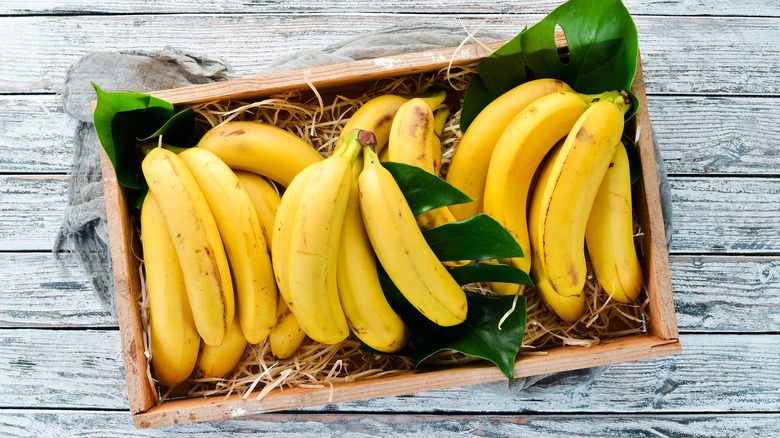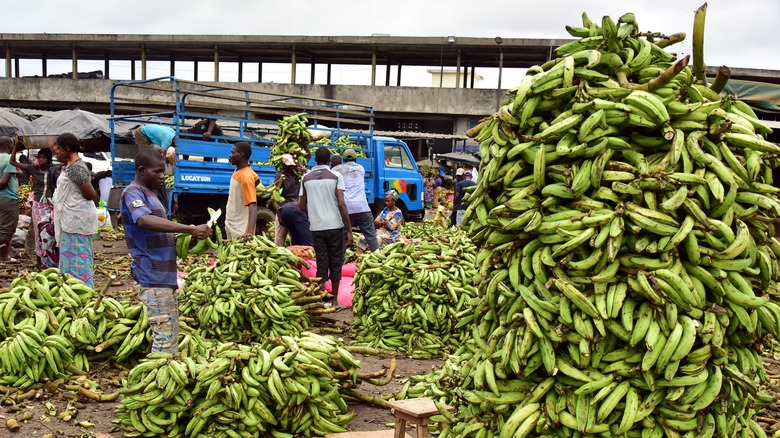What's The Difference Between Bananas And Plantains?
Bananas and plantains are easy to confuse. They look very similar, but they really aren't. Plantains, often referred to as the starchy cousin to the banana, are popular in Latin America, Africa, and the Caribbean, but these fruits are very different, and if you've ever tried to substitute a plantain for banana in a recipe, you know the resulting taste is not the same (via Healthline).
Bananas, which are actually considered a type of berry, are a staple in American households (via Stanford Magazine). From smashing one up to feed a baby to athletes consuming them after a race or workout to the baker who mashes up overly ripe bananas to make banana bread, bananas are quite popular.
This ordinary yellow fruit is considered to be a transformed strain of the red and green cooking variety of bananas, also known as plantains. Discovered by a Jamaican farmer in 1836, the first banana tree was a bit of an anomaly. Jean Francois Poujot found a tree bearing yellow fruit on his plantation (via Esquire). It was not only different in color from the green and red plantains, but he found the yellow banana was sweet as it grew on the tree and could be eaten upon peeling it. Poujot decided to start growing them, and they soon found their way to the United States.
What are plantains?
Plantains are thought to be native to Southeast Asia. They grow in tropical regions around the world, including the Caribbean and Central America. Unripe plantains are generally green, yellow, or brown, turning black when they are completely ripe. When they are at their ripest, plantains taste the most like a banana. Plantains are larger and heavier than bananas and they have a much thicker skin. They are difficult to peel and have a starchy and bitter flavor before they are cooked. Most people boil, fry, or bake plantains before eating them.
Nutritionally, they are similar in that both bananas and plantains are high in complex carbs, but for the plantain, the carbs come from the starch, whereas the banana's carbs come from sugar. Plantains have both less moisture and sugar (via All Recipes). According to The Pioneer Woman, peeling a plantain is not as easy as peeling a banana, especially if the plantain is green. She suggests using a paring knife to cut off the ends and score the skin along the seams of the peel. Pro tip: If you soak the plantain in a little salted water before cooking, it can remove the bitter-tasting latex before you cook (via El Valle Information).

